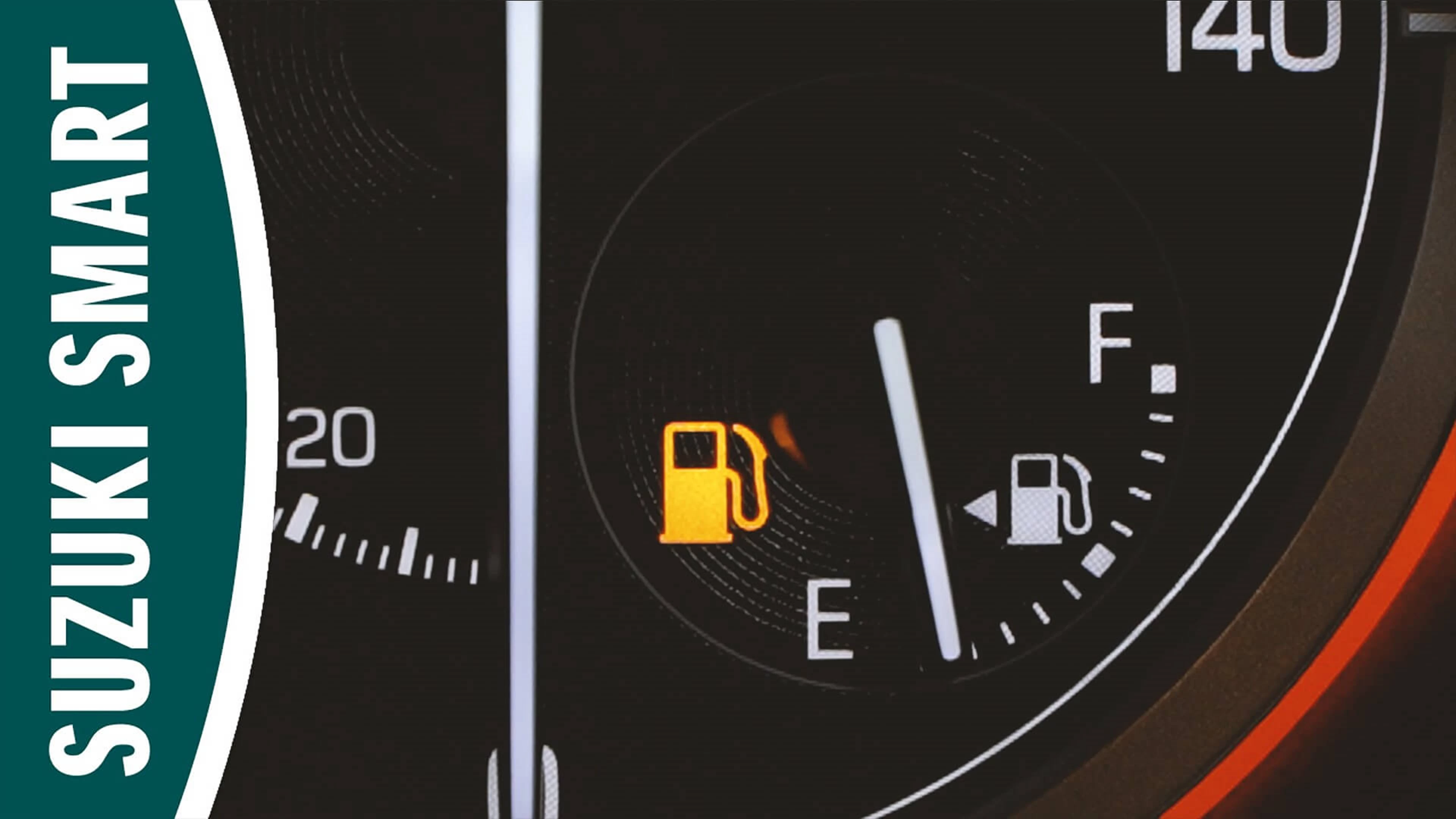Care and Use
All the help you need to make the most of your Suzuki.
HOW TO FILL UP YOUR CAR
Watch video below:

Instructions for
Filling up your car
Every make of car is built different which means that sometimes the simplest thing can become complicated. Like when your fuel is low, and you need to fill the car up.
In your Suzuki, a yellow light comes on with a ping telling you the fuel is low and you need to find a fuel station.
Your average MPG will show you how many miles you have approximately left in fuel.
When you arrive at the fuel station you have to turn off the engine. There is a lever on the floor at the driver’s side which when pulled will release the spring of the fuel flap.
Your fuel flap is on the side of the car, indicated on your dashboard next to the little petrol pump sign.
Always check which fuel you need to fill the car with. If you are unfortunate enough to put the wrong fuel in your car then never start the car but call your breakdown service there and then.
SAVE FUEL AND MONEY WHEN YOU DRIVE
Watch the video below:

With the price of fuel today, you want to be sure that you get the most from every drop that you pump into your car at the filling station.
The main way to maximise your fuel economy is to make sure that your car is running as efficiently as possible – which means getting regular services and health checks at your local Suzuki Service Centre.
But there are also lots of handy tips and tricks to help you improve the efficiency and mileage of your car.
For example, don’t keep your boot full of stuff that isn’t needed. Carrying 50kg of extra weight in your boot – and that’s not hard to do: a set of golf clubs, for example – will decrease your fuel economy by 1%.
You should also check your tyre pressures regularly, as these can also have an effect on fuel economy. For example, for every 1 psi that a tyre is under-inflated, you can increase your fuel consumption by up to 0.4%.
Watching your speed is another way of being as efficient as possible. If you drive at the lowest possible speed in your car’s highest gear – which should be possible on most dual carriageways and motorways – you’ll be maximising your car’s mileage.
Keeping the engine revs down – around 2,000rpm is the most efficient level – will also help save fuel. If your Suzuki has a gear-change indicator, it's worth following that as closely as possible.
Driving smoothly is another top tip for greater efficiency. If you avoid suddenly planting your right foot on the accelerator, or braking harshly, you’ll not only improve your fuel economy, but you’ll also reduce the wear and tear on your car.
LOOKING AFTER YOUR CAR’S AIRCON
Watch the video below:

More information about
Air Conditioning
Your Suzuki’s air conditioning system can help you stay comfortably cool when in the car – but, like every other aspect of a modern automobile, it needs to be serviced at regular intervals.
Air con systems are widely thought to make a car colder inside, but what it actually does is take the warmth and moisture out of the air in the car and replaces it with cooler air.
Because of the moisture passing through the system, it is important to ensure that bacteria and mould spores haven’t built up in the system if it hasn’t been used for a while. On the other hand, if it has been used a lot, it might need a new pollen filter, to help keep dust and some fine particles out of the cabin.
The other reason for servicing the air con is to ensure that the level of refrigerant gas, which helps cool the air pumped into the cabin, hasn’t fallen too low. Some gas is always lost when the system is in use, but if the level falls too low, the system won’t work effectively – or even at all- so it is important to recharge the air conditioner’s gas when this occurs.
Your Suzuki Service Centre can carry out a summer or winter check on your air con system, to ensure that you can stay cool in your car.
FOLDING YOUR REAR SEATS
Watch the video below:

More information about
Rear Seats
One of the reasons that hatchback cars and SUVs are popular with buyers is their flexibility: the rear seats can be folded down to create a much bigger load bay, so that owners can transport larger items, such as flat-pack furniture or larger appliances.
To fold the rear seats, you should refer to your owner’s handbook, or seek advice at your local Suzuki Service Centre, but there are some general guidelines that you can follow.
The first thing to do is remove the parcel shelf. Remove the hooks connecting it to the rear window, then either place the shelf on the floor of the boot, or put it somewhere safe in your garage or home.
Next, you’ll need to get the rear seats ready to be folded, the first stage of which is to lower the headrests. To do this, push the button at the base of the extendable arms supporting the headrests, then lower the headrests so they’re resting on the top of the seat. Repeat the process for all the headrests.
You’ll then need to retract the middle seatbelt into the roof storage area, by unplugging it from the holder in the seat base and tuck the buckle into the allocated space in the roof.
Next, release the seat latches, which are positioned on the outside (nearest the door) top corner of the seat, then lower the seats.
And you’re done. In order to return the seats to an upright position, just repeat the process in reverse – just make sure that the seats are repositioned correctly, in order for the seatbelts to do their job safely.
GRIPPING TYRE FACTS
Watch the video below:

More information about
Tyre grip
Being a careful driver is obviously very important, to keep yourself and other road users safe.
However carefully you drive, there’s another factor to consider: your car. It has to be maintained in a roadworthy condition at all times, in order to minimise any chance of an accident. But a half of British drivers would ignore any unusual noise that their car was making – which is a sobering figure.
The same goes for the fact that one in 10 of us drives around in a car with a bald tyre (the legal tread depth is 1.6mm across the central three-quarters of the tyre, across its complete circumference). This is despite risking a £2,500 fine and three penalty points on your licence. For every tyre. So if all your tyres have a bald patch, you could face a £10,000 fine and automatically lose your licence.
And then there’s checking your car before the start of winter, which is statistically the most dangerous time of year for crashes. That’s only logical really, because apart from all the wind and rain, the puddles, standing water and increased likelihood of potholes forming, there’s snow and icy road surfaces. However, if your car is in tip-top shape before the onslaught of winter weather and hazardous driving conditions, there’s a much better chance that you can keep you and your family safe. A visit to a Suzuki Service Centre will help in this regard – and if you diligently ensure that it stays in shape by caring for it and undertaking all the basic checks on oil, tyres, etc on a regular basis.
If you look after your tyres, your tyres will look after you.
Tyres are among the most important components on your car, those four rings of rubber being the only things connecting your car to the road. Making sure that they're in good condition, at all times is crucial.




